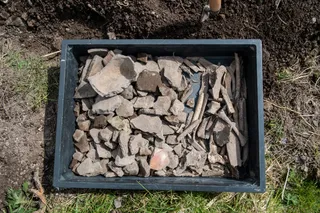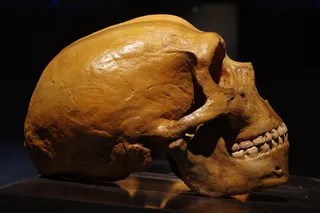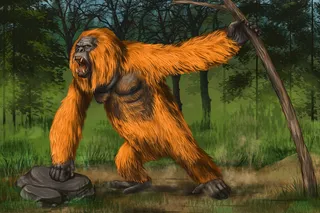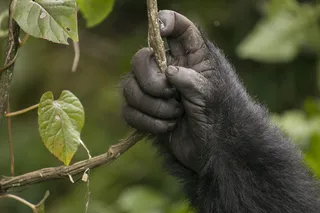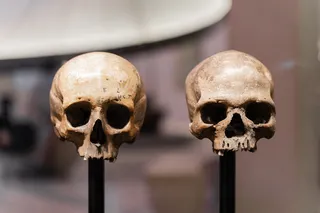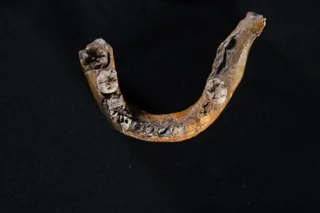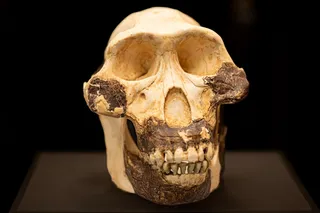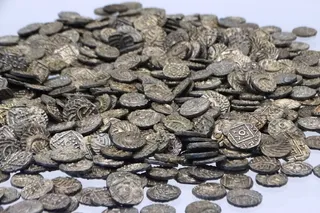The evolutionary path leading to the rise of modern humans is full of twists and turns, and the latest surprise reveals that our species likely sprung forth from two ancient intermingling populations. A new study has confirmed that these groups first diverged from each other around 1.5 million years ago and later merged back together 300,000 years ago, initiating a genetic mixing event that culminated with the birth of modern humans.
The study, published in Nature Genetics, completely rewrites the story of humans. Scientists have long believed that Homo sapiens first appeared in Africa somewhere between 200,000 years and 300,000 years ago, having descended from a single ancestral lineage. The idea of genetic admixture flips the script, however, showing that human origins are much more complex than previously thought.
A Split Population Reunites
The researchers involved with the new study didn’t need to rely on elusive ancient remains to establish this revised chapter of human history. Instead, they tapped into modern human DNA from the 1000 Genomes Project, an international catalog filled with human genomes from a variety of populations.
The research team created a computational algorithm called cobraa, which was designed to represent the event of an ancestral population splitting and rejoining. They first tested the algorithm with simulated data and then applied real human genetic data.
With this method, they were able to produce a structured model that displayed two ancestral populations breaking apart in ancient times. In the years after this divergence, one of the populations experienced major fluctuations in size.
“Immediately after the two ancestral populations split, we see a severe bottleneck in one of them — suggesting it shrank to a very small size before slowly growing over a period of one million years,” said co-author Aylwyn Scally from the University of Cambridge’s Department of Genetics, in a statement. “This population would later contribute about 80 percent of the genetic material of modern humans and also seems to have been the ancestral population from which Neanderthals and Denisovans diverged.”
Read More: Who Were the Denisovans?
Purifying Harmful Mutations
The second population, meanwhile, contributed 20 percent to the genetic makeup of modern humans. The researchers found that many of the genes this group passed along to humans were not located near regions of the genome corresponding to gene functions; this could reflect a concept called purifying selection, which is the process of natural selection filtering out harmful mutations. However, the researchers believe that some of the genes from the second population may have still been integral to brain development in modern humans.
Later down the line of human genetic history, purifying selection would play an important role after Neanderthals and humans interbred around 50,000 years to 45,000 years ago. Past studies have indicated that certain Neanderthal alleles were cast aside by natural selection because they were detrimental to our ancient ancestors.
Who Were the Ancestral Populations?
An element of mystery still surrounds the identity of these ancestral populations. The researchers point to Homo erectus and Homo heidelbergensis as potential answers since they were present in Africa around the time of the genetic admixture, but further research is needed to match genetic ancestors with fossil groups.
The genetic exchange that shaped humans’ genomes 300,000 years ago demonstrates that evolutionary history is more nuanced than once thought, and the experience isn’t just limited to human origins. Similar genetic admixture may have even given rise to a broader range of life beyond humans.
“What’s becoming clear is that the idea of species evolving in clean, distinct lineages is too simplistic,” said first author Trevor Cousins, also from Cambridge’s Department of Genetics. “Interbreeding and genetic exchange have likely played a major role in the emergence of new species repeatedly across the animal kingdom.”
Read More: 10 of the Most Important Neanderthal Fossil Discoveries
Article Sources
Our writers at Discovermagazine.com use peer-reviewed studies and high-quality sources for our articles, and our editors review for scientific accuracy and editorial standards. Review the sources used below for this article:




